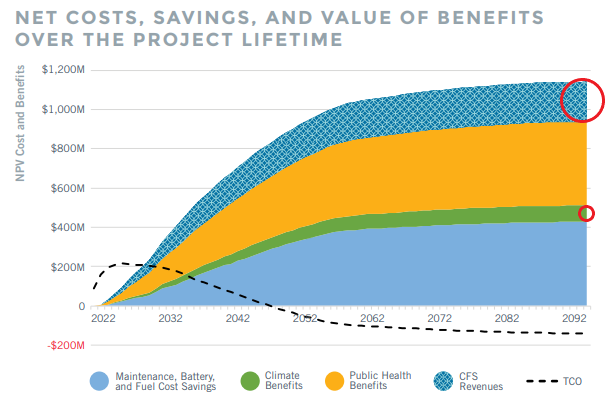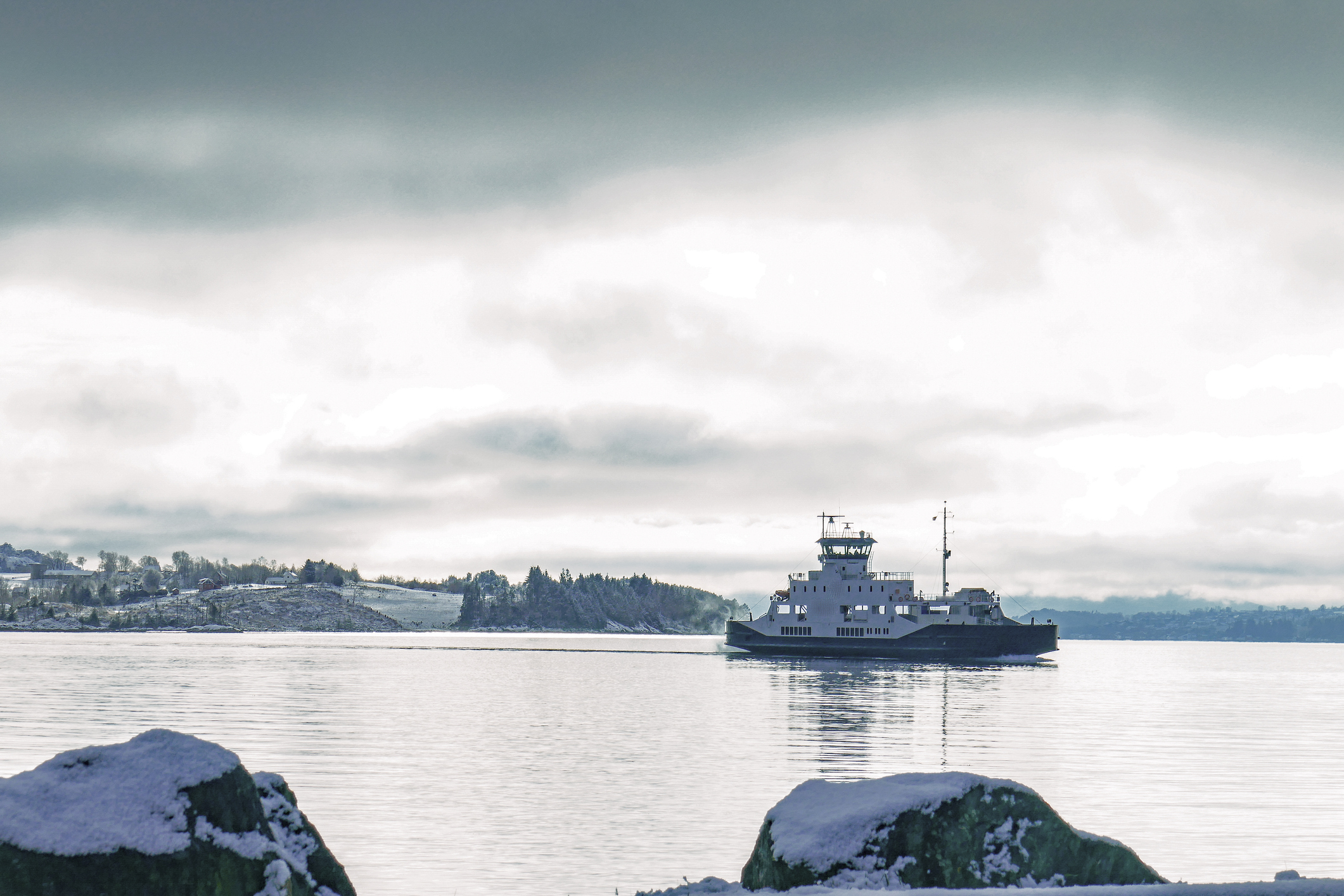A recent graphic from the group Clean & Prosperous Washington (CPW) illustrates the strange math of climate policy in Washington state – where taxes are counted as savings and the costs of climate policies outweigh the environmental benefits. These sorts of accounting games end up doing more environmental harm because they skew the analysis toward expenditures that yield few (if any) environmental benefits, undermining the already wasteful low-carbon fuel standard to make electric ferries appear feasible.
The graphic claims to tabulate the costs and benefits of purchasing electric ferries to replace the existing diesel ferries. The proposal has hit the rocks because of the extremely high cost, and the legislature is looking to remove the requirement that ferries be built in Washington to try to bring the price down.
CPW released this graphic claiming that even expensive electric ferries would create more benefits than costs. Several things stand out, but I’ll focus on a few elements that are particularly enlightening.
 First, the graphic highlights the value of “climate benefits” in green. This is the value of reducing CO2 emissions compared to the diesel ferries.
First, the graphic highlights the value of “climate benefits” in green. This is the value of reducing CO2 emissions compared to the diesel ferries.
It also highlights “CFS Revenues.” The CFS – Clean Fuel Standard – is a new law (also known as the low-carbon fuel standard or LCFS) that requires fuel suppliers to purchase credits from others who reduce transportation-related emissions. The claim is that Washington State could sell the reduction in emissions from the electrified ferries to fuel suppliers to meet their CFS requirements. This amount is interesting for two reasons.
First, by comparing the “CFS Revenues” to “Climate benefits” in the graph, it is clear that the cost of the CFS is higher than the climate benefits provided. In other words, the CFS costs several times as much as the benefits it provides – it does more harm than good by the advocates’ own math.
This is something we’ve highlighted several times. The CFS is an extremely expensive way to cut CO2 emissions. This isn’t just about cost. The environment suffers when we waste money on expensive projects instead of focusing resources on more effective policies.
There is another, fundamental, problem with the graphic. The CFS “revenues” are counted is “savings” or “benefits” when they are actually costs. The “revenues” from the CFS are really just mandated payments that Washington residents pay when they purchase fuel. It is essentially a tax generated by a regulatory mandate.
The other irony is that the CFS is supposed to incentivize CO2-reducing projects that would not have otherwise occurred. The governor and legislature, however, have committed to building electric ferries with or without those funds. If the state gets “CFS revenues” it is just cannibalizing their own climate policy. By mandating that fuel suppliers buy CFS credits and then having the state sell credits, it just becomes an extremely complex tax scheme. The money ends up in the state coffers in a more roundabout way.
Instead of money from the CFS going to support what its advocates claim they want – innovation of new low-CO2 transportation technologies – the funding would go into the state budget for something that would likely occur anyway.
These are the games that get played when politics drives climate policy. When the math doesn’t add up, costs are claimed as benefits.
Much else about this chart is speculative or unknowable. The ultimate cost of electrification of ferries is unclear and the legislature is reopening the bidding because initial costs were well above estimates.
The claimed “public health benefits” from electrification of ferries are also extremely dubious. There is no study showing how the reduction in particulate matter (PM) or NOx from ferries would yield the benefits they claim. By way of contrast, a study from the Inslee Administration found that the CFS would yield tiny reductions in PM and NOx. Additionally, the newer ferries in the fleet as well as any future upgrades need to comply with EPA Tier 4 requirements, which means they generate far less of the NOx and fine particulate emissions associated with health impacts.
CPW also claims that reducing diesel emissions is particularly important because “the proximity of these ferry routes and terminals to population corridors puts many communities at high risk for environmental health disparities.” The state’s own data demonstrates this hand-waving claim is false. The Washington State Health Disparities Map shows that communities with ferry terminals – Edmonds, Kingston, Bainbridge Island, Mukilteo, Clinton, Friday Harbor, Orcas Island, Anacortes – all have health impacts from “diesel exhaust PM 2.5 emissions” that are at the lowest or near the lowest levels. Whatever speculative benefits would occur would be in places where pollution is already extremely low.
Vague health benefits are often used to justify various policies because the data and research is murky and can be abused to make bad policies look reasonable.
Ultimately, the graphic demonstrates how much advocates of electrified ferries have to stretch the math to justify the huge cost of those boats. The state's data and the need for these accounting tricks make it clear that electrification is not a good strategy to reduce CO2 emissions.



